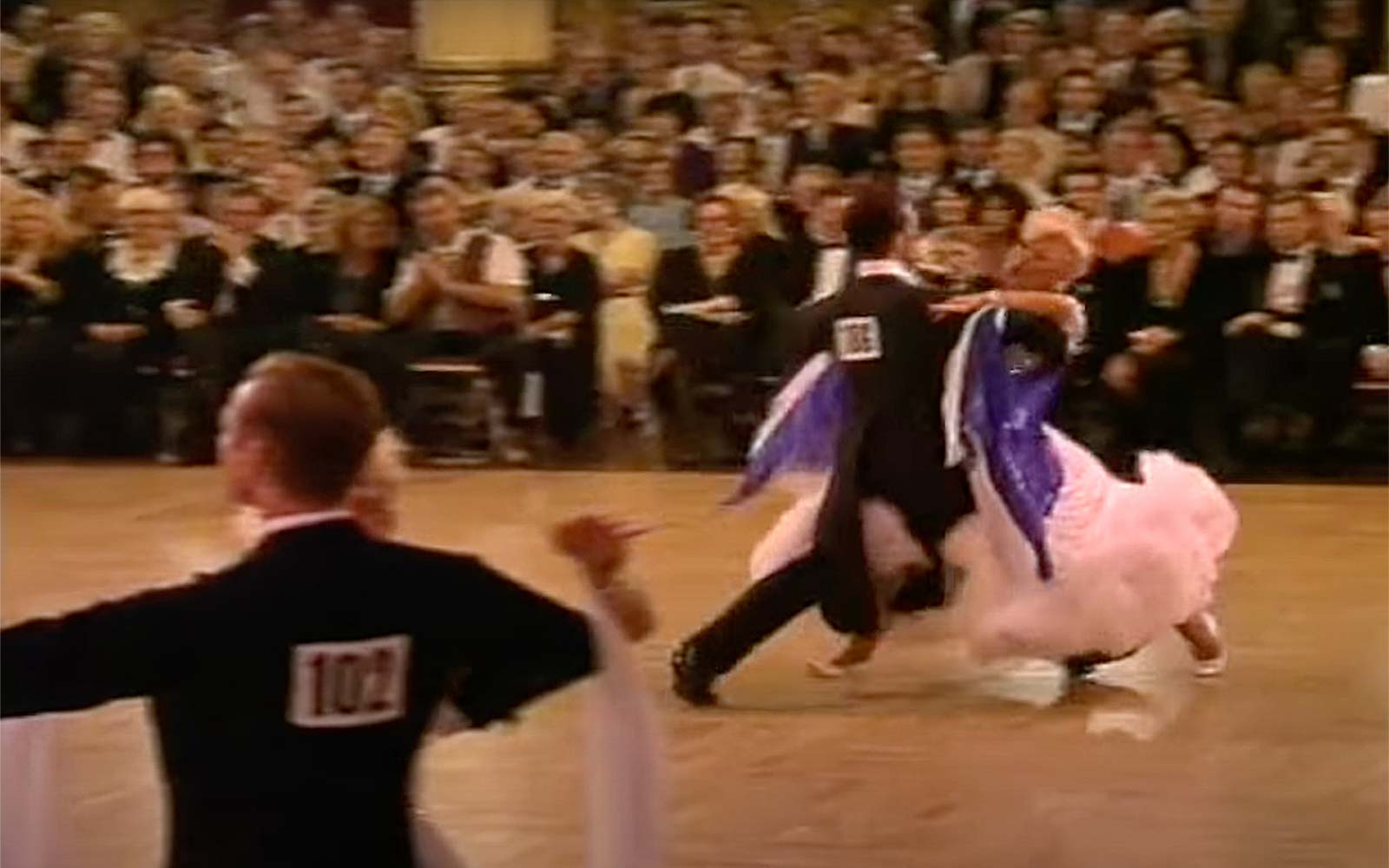I’ve never made a secret of my concern about some of the ways quality is being lost when it comes to Ballroom and Latin dance. It’s not just the excess emphasis on athleticism. There’s an overall shift in our culture toward looking for results without putting in the work.
The impact this shift has had on dancing quality became staggeringly apparent last week during a lesson. I was talking with a student about technical details in Slow Foxtrot, and trying to communicate the common problem in which the body arrives over the foot too early, limiting body flight and the visual look of the dance.
I thought it would be helpful to pull up some video of the world’s top pros dancing Slow Foxtrot to illustrate. But I wasn’t prepared for the personal culture shock I would personally experience in doing this.
First I pulled up a Professional Blackpool video from 2012, thinking that would be far enough back to show good footwork. The quality of dancing is evident. These are the very best couples in the world at that time. I continue to be a huge fan of some of these dancers. You can see slow, gliding movement rich with musical light and shade, along with beautiful body flight.
But then I remembered an even older video, from the Professional Ballroom event at Blackpool in 1993. So immediately after watching the 2012 event, I pulled we took a look back to 1993. I was, frankly, shocked at the difference. I thought 2012 had been good. The quality of musicality and movement in this older competition was an order of magnitude better!
The experience reminded me of a blog post I saw years ago complaining how competitive skating and ice dancing have deteriorated since the glory days of the 1980s. The post, which seems to be no longer available, compared videos side-by-side between then and now. The difference between them was stunning.
I love some of the evolution ballroom dancing has experienced. There is more volume, more dynamic energy, more understanding of 3D presence and shaping. These have contributed to making it better in some ways, and more appealing to young people. But so much has also been lost. It is my hope that we can, if not able to return to the quality of 1993 musicality and movement, at least stop the decline.
Below are the two videos we looked at. View them yourself in the order shown and see if you can appreciate the differences.
2012 Blackpool Professional Ballroom final
1993 Blackpool Professional Ballroom final
Curious if this decline in quality has continued? I thought you might be. Here’s a look at a 2019 WDC event for comparison. The choreography of the first couple shown is quite similar to that of Augusto & Caterina from 1993. I believe the shaping, 3D styling, posture and other aspects have dramatically improved, but the quality of movement timing (body weight distribution in relation to music) is not as good.















Thank you for posting this, George. I love to watch the masters from the ‘90s – Wood and Lewis, Sinkinson and Barry, the Hiltons, the Welches. They were my inspiration and sometime teachers! Those slow, powerful, full-bodied swings were so beautiful. I remember watching those videos over and over, working on my own swing and knowing how difficult it was to attain that level. I once danced a feather step with Andrew Sinkinson and remember thinking it was like dancing with an ocean wave! I do miss those days, I think they were the peak of ballroom dancing. We teachers need to bring back that quality! – Janice Boles
The video formats are different, so that the 1993 dancers are squashed in the vertical direction, which makes them appear to be traveling through the music more. Also their tops look bigger for the same reason. But it is just an illusion. I feel the 2012 dancers are better in every way to the 1993 ones – flow, musicality, choreography, posture, power and shape – when they are viewed in equal formats.
I agree that the aspect ratio was a problem with the 1993 video. To correct that illusion, I created and embedded a new version of the video with aspect ratio corrected for NTSC standards. It does not change the impact of the movement quality in the older event. What we like is often subjective while technique is objective. Like you, I appreciate the more modern shaping, posture and many aspects of choreography. I think these have improved a great deal over the years. But when you examine the difference in fundamental technique you can see that focus on athleticism has negatively impacted such things as body weight distribution in relation to musicality. While modern dancers have what appears to be more power from a purely physical perspective (exertion), the older event demonstrates more power because the couples are able to produce longer strides while looking more relaxed in their physical effort. Their body weight arrives much later over the new standing leg, creating an effect that makes the music appear to be slower than it really is. In every dance there is a greater understanding of timing of movement to the music. We have lost that skill in our push for more aggressive movement.
Watching videos from different decades makes it pretty clear that dancers overall improved the upper body movement and shaping and completely forgot about the footwork/base improvement. Music interpreted in a different way using more syncopations nowadays.
The decline in quality of movement will sadly only be truly understood by those who were a witness to the golden era ( wood, sinkinson,schiavo, hilton, and their contemporarys).
Its my opinion that ” sport” is what ruined the art of ballroom. As an ex competitor from the late 80’s early 90’s , who was privilaged to learn off some of these legends but also their teachers i can attest to the truth that the ONLY way to achieve their quality of action is through dedication to classical principals of dance and sheer hard work. The shape is secondary to two bodies moving effortlessly in seamless harmony in time to the music, and it always will be.
The solution to the problem is quality adjudication, not marking great shapes and blistering speed in preference to classical values, perhaps finding quality adjudicators these days could in itself be a challenge. In closing i would like to suggest, there is only one style, classical, there is no ” dynamic” style. Broken sides to produce exaggerated shapes, is a dance error that was erradicated with hard work in the semley or grafton ballrooms many years ago by the legends who carried the torch at the time.
Friendship through the dance lives on.